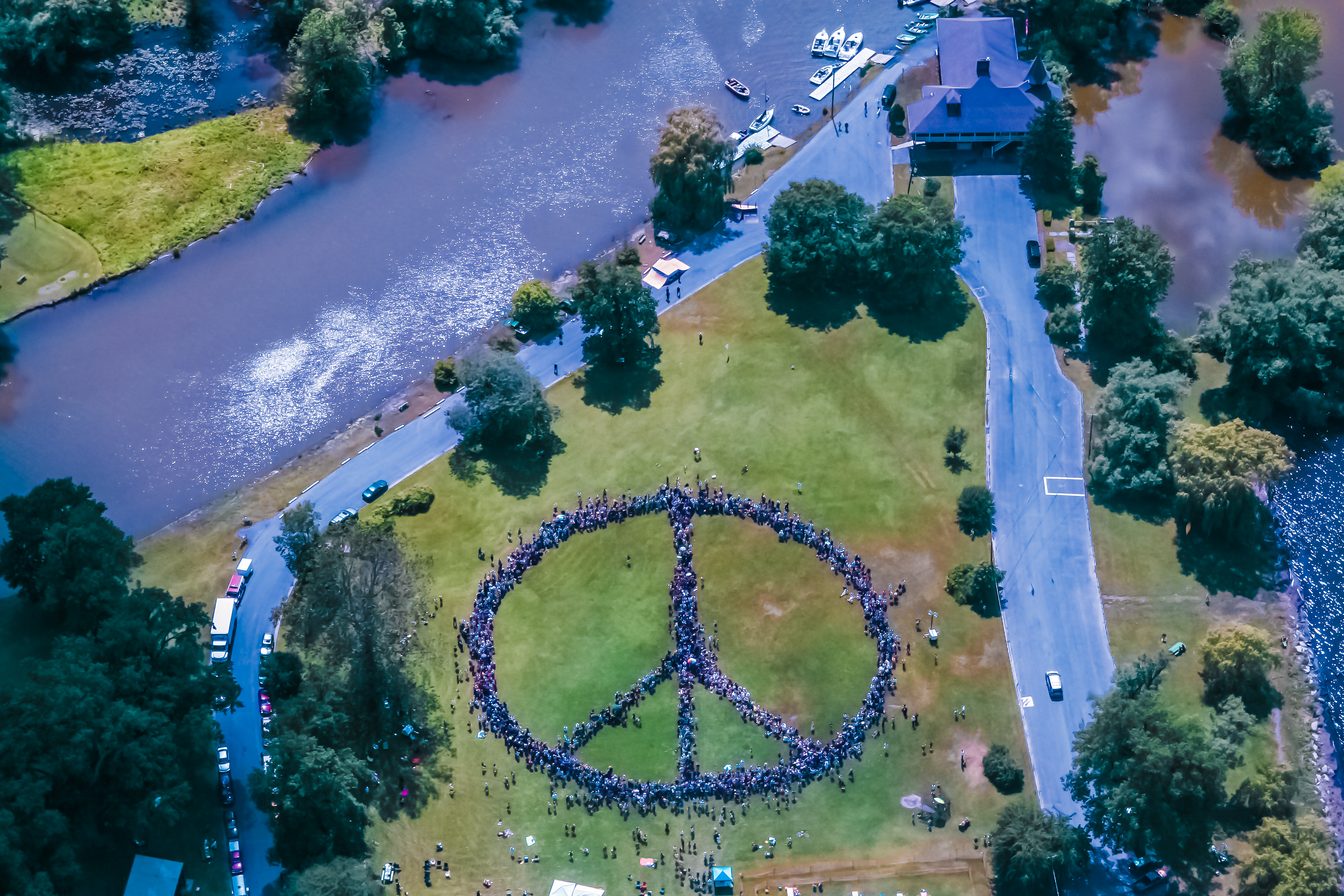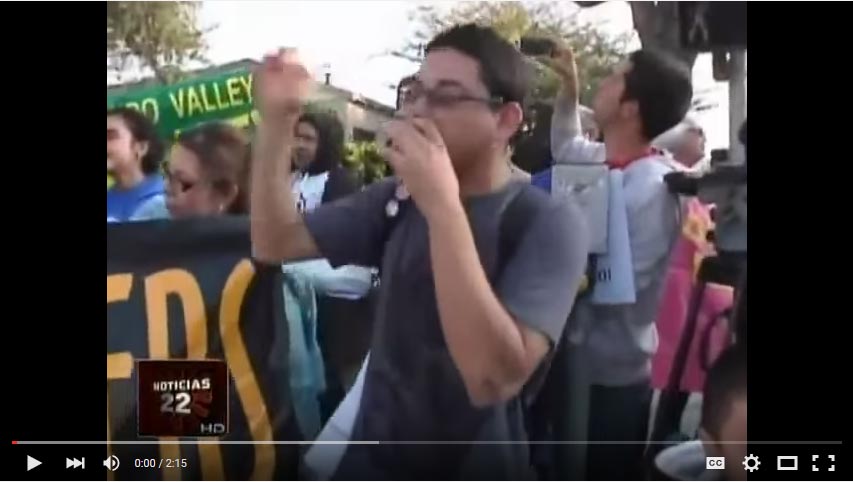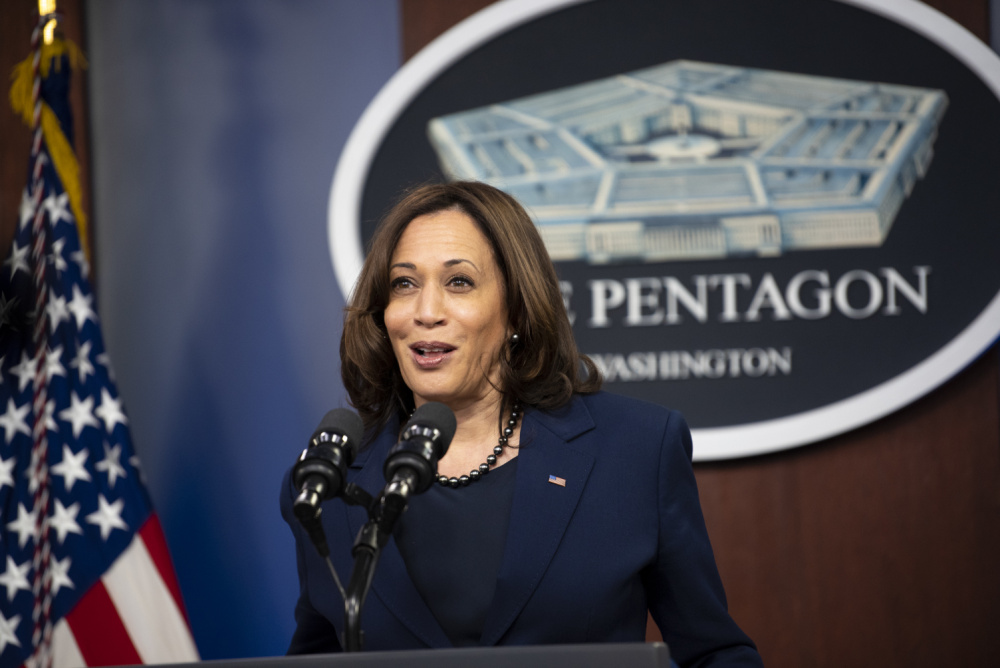A Culture Of Teaching Peace
 To envision a culture of teaching peace precludes a society that supports, funds and appreciates the rich global history of nonviolence through an explicit pedagogy and practice of peace. In essence, the learning environment fosters an outlook of global interdependence, ecological accountability and cultural sensitivity. The community places peace at the center of the content and processes, embracing all learning styles and environments, as well as supporting a participatory and shared learning environment between teachers and students.
To envision a culture of teaching peace precludes a society that supports, funds and appreciates the rich global history of nonviolence through an explicit pedagogy and practice of peace. In essence, the learning environment fosters an outlook of global interdependence, ecological accountability and cultural sensitivity. The community places peace at the center of the content and processes, embracing all learning styles and environments, as well as supporting a participatory and shared learning environment between teachers and students.
This culture of teaching peace recognizes that peace is not simply the absence of violence, but rather a dynamic state of self-inquiry, relationship-building and mindfulness. Peace does not mean running from conflicts, but rather bringing consciousness to the moment when conflict takes place and participating in a process of conflict transformation which has been taught and reinforced through the educational system. It encompasses relevant curriculum designed to cultivate an environment where questioning, critical thinking and compassion are encouraged in and out of the school setting.
If we desire to be a peace-building, peace-affirming, peace-loving world, we must dedicate our time, energy and resources toward teaching students about the meaningful lessons that can be learned inside the classroom as well as outside in the world.
A culture of teaching peace addresses the embedded problems of racism, classism, gentrification, verbal violence, militarism, structural and institutional violence, police and state brutality, legal and illegal violence, misogyny, globalization and capitalism. A culture of teaching peace is one which advocates teaching ways of behaving that enhance the self-worth of every member of society.
Enculturating the notion of teaching peace should be the primary concern for administrators, teachers and students. Our world is inundated with an unprecedented level of violence which has even permeated the previously safe haven of schools. Ranging from interpersonal conflicts to school shootings to the presence of military recruiters on campuses, education has become a polarized environment rather than a place of exploration and wonderment. Reclaiming education and teaching for peace means respecting learners' individuality, inviting a spirit of community and acknowledging the principle of interconnectedness which links the common human experience. We must promote a worldview which sees all humans as one family, and a worldview where responsibility for the global family starts at an individual level.
Teaching peace focuses on the content of classroom instruction, i.e. the lesson plans, reading material and discussions which relay valuable information about great peacemakers, various nonviolent tactics and strategies for creating positive change and the various resources - the organizations and individuals - who currently employ the methodology of peacemaking. Teaching peace also places importance on the process of education, i.e. the structure of the classroom, shared power between teacher and student, and a cooperative, co-creative learning process where factors like race, religion, background and learning ability are honored as swaths of fabric in a colorful cultural quilt.
The case of the Program Pendidikan Damai , a peace education program specifically designed for the province of Aceh, Indonesia, is a good example of a culture of teaching peace. In response to the pandemic brutal war between the Free Aceh Movement and the Indonesian military which has caught tens of thousands of civilians in the crossfire, local educators solicited the advice of international non-governmental organizations in creating a curriculum rooted in principles of nonviolence. The curriculum incorporates tenets of Islamic teaching as well as Acehnese culture, and is thus aptly relevant to the students who, frustrated with the level of violence in their cities and countrysides, decided to participate in workshops and trainings to learn how they can be agents of positive change in their communities. The local schools have adopted the curriculum and have begun teaching the lessons during school hours.
This example of a culture of teaching peace. Aceh, and the Program Pendidikan Damai, are imperfect, and the process has not succeeded in ending all of the violence in the region. However, teachers and students are cooperating in building a culture of peace through explicitly teaching peace.
Impediments to a culture of teaching peace:
Some schools worldwide have specific courses dedicated to studying the history, scope and practical applications of nonviolence. While beneficial as supplementary courses, their existence underlies a much greater problem: textbook writers and curriculum designers have systematically undervalued the contributions by great peacemakers and of successful peace movements throughout the world. Unless a dynamic teacher engages the students in learning about the relevance of peacemaking in human history, students likely emerge from their compulsory education as peace illiterates, disconnected from their place in the world, ignorant of their responsibility for giving back to the communities that helped raise them.
Students cannot be expected to internalize peace when their bodies and minds are malnourished and underfed. Too many students arrive at school with their stomachs empty and their heads and hearts filled with the burdens of poverty and social immobility. Disempowered by their inability to vote and thus formally register their opinions, many young students are at the mercy of war-torn countries, unhealthy living environments and inadequate educational systems. A culture of teaching peace goes hand in hand with workers' rights, movements for a living wage, child labor and exploitative practices which subjugate many to appease the greeds of a few.
Moreover, if external peace is neglected in the outside world and in pedagogy, internal peace is outright omitted during the school day. Students are expected to shelve their yearnings for meaningful experiences which formal education often denies, for a plethora of reasons. Lack of funding, too few teachers, too many students, disparity between formal education and the 'real world,' and reliance on grading and testing to measure a student's capabilities are only a few of the many reasons why students emerge from school deprived of personal peace. Time for reflection and engaging with one's own emotions does not have a place in the schoolday. Institutional reforms, like rewriting textbooks to include more information about nonviolent figures and movements, as well as structural reforms, like rethinking systems of grading and testing, will support nonviolent change at higher levels and encourage students to reclaim their education.
One of the biggest impediments to a culture of teaching peace is the systematic disempowerment that students experience. Students give over their dreams and self-confidence in regimented learning environments. Entering school as young children, they have accomplished the natural tasks of acquiring language and moderately navigating their expanding world. Most have not yet learned to doubt. Formal education can deprive students of their inherent agency, numbing them into submission. By the time students leave school, many students cannot trust anyone, least of all themselves.
Why teach peace?
Students deserve to learn about a history of their world which incorporates the narrative of peacemakers rather than the monopolization of teaching peace gives students the tools to constructively deal with the problems they encounter on both a personal and global level, and it helps them understand their responsibility for elevating the collective human experience. Education that excludes peace from both content information and through peaceful processes also denies students a full range of opportunities to make the best choices for them, and freedom of choice requires access to information.
The goal is ultimately to unlock in students the ability to be autodidactic, and to have a powerful understanding of their role in promoting peace in the world. Since formal education often leads to future job prospects, a culture of teaching peace ought to offer dynamic examples of careers with a conscience, or choosing a vocation which utilizes their unique gifts and talents and which is ecologically sound, morally upright and globally-minded. Giving evidence that peace is a viable and tangible career option can open doors and broaden students' perspectives.
Teaching peace is not restricted to a particular school or context using a specific methodology or practice. A culture of teaching peace recognizes the varied and diverse learning environments where students encounter opportunities to refine their notions of peace. Nature hikes, punk concerts, trips to the library or lectures and flying a kite are some of the activities outside the classroom which 'count' as peace education. Science teachers can teach peace by promoting environmental awareness and ecological thinking. Foreign language teachers can read and/or translate primary-source texts from the target language which detail experiences in personal, local, national and global peacemaking efforts. Physics classes can learn about the subatomic exchange of matter and energy which binds all humans to one another. Themes of peace and justice can be infused in every content subject so that peace is pervasive in the curriculum.
A culture of teaching peace can also begin in unconventional places. In prisons and juvenile detention facilities in the United States, a curriculum called Solutions to Violence is impacting the incarcerated youths and adults in a positive way. Death Row inmates have begun teaching the class, and graduates proudly display their diploma stating that they have read the likes of Tolstoy, Gandhi, Merton and King. A culture of teaching peace is beginning to take hold in the places reserved for the most violent criminals. Students of peace in any environment can learn the principles of conflict resolution and internalize the messages in Thich Nhat Hanh's vast literature.
What lies ahead for a culture of teaching peace:
A comprehensive global network of educators promoting peace will create waves of new teachers who are motivated to teach peace. Teachers and students are supported in their endeavors and encouraged to use creativity. In a culture of teaching peace, governments ensure that education receives all the funding necessary to purchase supplies and provide meals and materials for students. The entire well-being of the student is taken into consideration, establishing a nurturing environment.
A culture of teaching peace requires that we look critically at how we categorize, label and sort students into various learning groups or arbitrary classifications like perceived learning ability. It means that students come to class with an inherent capacity to learn and to teach, and that the essence of a culture of teaching peace requires acknowledging that teachers and administrators do not have all of the answers. A culture of teaching peace places trust in the unknown, creating space for educational adventure and risk-taking, stepping outside of conventional ways of interacting and of predictable patterns of learning.
A culture of teaching peace would begin formally in pre-school and progress developmentally through university studies, extending outward into every facet of life. It also makes room for those life-learners who are not confined to classrooms but who seek wisdom and knowledge out in the open. All community members are involved with the process of invoking a culture of teaching peace, recognizing teachable moments and opportunities for learning in and out of the classroom.
A culture of teaching peace would not hesitate to tackle the difficult subjects of nuclear weapons, economic disparities reinforced by powerful international organizations and multinational corporations resulting in a mass feminization of poverty. A culture of teaching peace inherently turns toward restorative justice as a means of addressing the needs of oppressors and of the oppressed. This culture of peace through education would advocate for internationally upheld treaties and peaceful diplomacy between nations, as countries and their leaders set the moral tone for their citizens.
We cannot question whether or not this culture of teaching peace will or will not take place. Dr. Martin Luther King, Jr. said that "the choice is not between nonviolence and violence but between nonviolence and nonexistence." This is the mandate under which a culture of teaching peace operates. For the sake of future generations and to create a peaceful present reality, we must teach and learn how to get along with each other.
Leah C. Wells serves as the Peace Education Coordinator for the Nuclear Age Peace Foundation, USA. This paper was presented to the UNESCO Conference on Intercultural Education in Finland on June 16, 2003. E-mail: This email address is being protected from spambots. You need JavaScript enabled to view it.
Source: http://www.commondreams.org/views03/0616-01.htm (archived)
Here are some recommended links available to better inform you as as educators. This is a work in progress and NNOMY will be adding new documents as they are prepared and as policies change that effect enlistment. Check back periodically.
Organizations that provide curricula for teaching peace in the classroom:
Resources:
The National Network Opposing the Militarization of Youth 2015 Back-to-school Kit for Counter-recruitment and School Demilitarization Organizing is now available to assist you in understanding the work, your rights, and the challenges to return to the public schools to counter-recruit. Please visit this page and review the materials we have assembled for you and feel free to ask questions as well at Our Contact Page and we will do our best to answer you or your group in a timely manner.
Links:
Documents:
Articles on the web:
###
Revised: 03/26/2018







 The warning, given to me 25 years ago, came at the moment Pat Robertson and other radio and televangelists began speaking about a new political religion that would direct its efforts at taking control of all institutions, including mainstream denominations and the government. Its stated goal was to use the United States to create a global, Christian empire. It was hard, at the time, to take such fantastic rhetoric seriously, especially given the buffoonish quality of those who expounded it. But Adams warned us against the blindness caused by intellectual snobbery. The Nazis, he said, were not going to return with swastikas and brown shirts. Their ideological inheritors had found a mask for fascism in the pages of the Bible. - Chris Hedges (From his article:
The warning, given to me 25 years ago, came at the moment Pat Robertson and other radio and televangelists began speaking about a new political religion that would direct its efforts at taking control of all institutions, including mainstream denominations and the government. Its stated goal was to use the United States to create a global, Christian empire. It was hard, at the time, to take such fantastic rhetoric seriously, especially given the buffoonish quality of those who expounded it. But Adams warned us against the blindness caused by intellectual snobbery. The Nazis, he said, were not going to return with swastikas and brown shirts. Their ideological inheritors had found a mask for fascism in the pages of the Bible. - Chris Hedges (From his article: 



 David Swanson is the author of the new book, Daybreak: Undoing the Imperial Presidency and Forming a More Perfect Union, by Seven Stories Press and of the introduction to The 35 Articles of Impeachment and the Case for Prosecuting George W. Bush by Dennis Kucinich. In addition to cofounding AfterDowningStreet.org, he is the Washington director of Democrats.com and sits on the boards of a number of progressive organizations in Washington, DC.
David Swanson is the author of the new book, Daybreak: Undoing the Imperial Presidency and Forming a More Perfect Union, by Seven Stories Press and of the introduction to The 35 Articles of Impeachment and the Case for Prosecuting George W. Bush by Dennis Kucinich. In addition to cofounding AfterDowningStreet.org, he is the Washington director of Democrats.com and sits on the boards of a number of progressive organizations in Washington, DC. Jorge Mariscal is the grandson of Mexican immigrants and the son of a U.S. Marine who fought in World War II. He served in the U.S. Army in Vietnam and currently teaches at the University of California, San Diego.
Jorge Mariscal is the grandson of Mexican immigrants and the son of a U.S. Marine who fought in World War II. He served in the U.S. Army in Vietnam and currently teaches at the University of California, San Diego. Matt Guynn plays the dual role of program director and coordinator for congregational organizing for On Earth Peace, building peace and nonviolence leadership within the 1000+ congregations of the Church of the Brethren across the United States and Puerto Rico. He previously served a co-coordinator of training for Christian Peacemaker Teams, serving as an unarmed accompanier with political refugees in Chiapas, Mexico, and offering or supporting trainings in the US and Mexico.
Matt Guynn plays the dual role of program director and coordinator for congregational organizing for On Earth Peace, building peace and nonviolence leadership within the 1000+ congregations of the Church of the Brethren across the United States and Puerto Rico. He previously served a co-coordinator of training for Christian Peacemaker Teams, serving as an unarmed accompanier with political refugees in Chiapas, Mexico, and offering or supporting trainings in the US and Mexico. Rick Jahnkow works for two San Diego-based anti-militarist organizations, the Project on Youth and Non-Military Opportunities and the Committee Opposed to Militarism and the Draft. He can be reached at:
Rick Jahnkow works for two San Diego-based anti-militarist organizations, the Project on Youth and Non-Military Opportunities and the Committee Opposed to Militarism and the Draft. He can be reached at:  Pat Elder was a co-founder of the
Pat Elder was a co-founder of the 
 Edward Hasbrouck grew up in Wellesley, Massachusetts, a suburb of Boston. He considers myself primarily a political activist. Hasbrouck began his resistance to the violence of illegitimate authority as an elected but nonvoting student representative to the local school board and as an activist for peace, disarmament, and students' rights. His first book was a handbook for high school students on their legal rights co-authored in the summer of 1977, between high school and college, as an intern for the student service bureau of the Massachusetts Department of Education. He majored in political science at the University of Chicago until leaving school to pursue direct involvement in political activism.
Edward Hasbrouck grew up in Wellesley, Massachusetts, a suburb of Boston. He considers myself primarily a political activist. Hasbrouck began his resistance to the violence of illegitimate authority as an elected but nonvoting student representative to the local school board and as an activist for peace, disarmament, and students' rights. His first book was a handbook for high school students on their legal rights co-authored in the summer of 1977, between high school and college, as an intern for the student service bureau of the Massachusetts Department of Education. He majored in political science at the University of Chicago until leaving school to pursue direct involvement in political activism.




